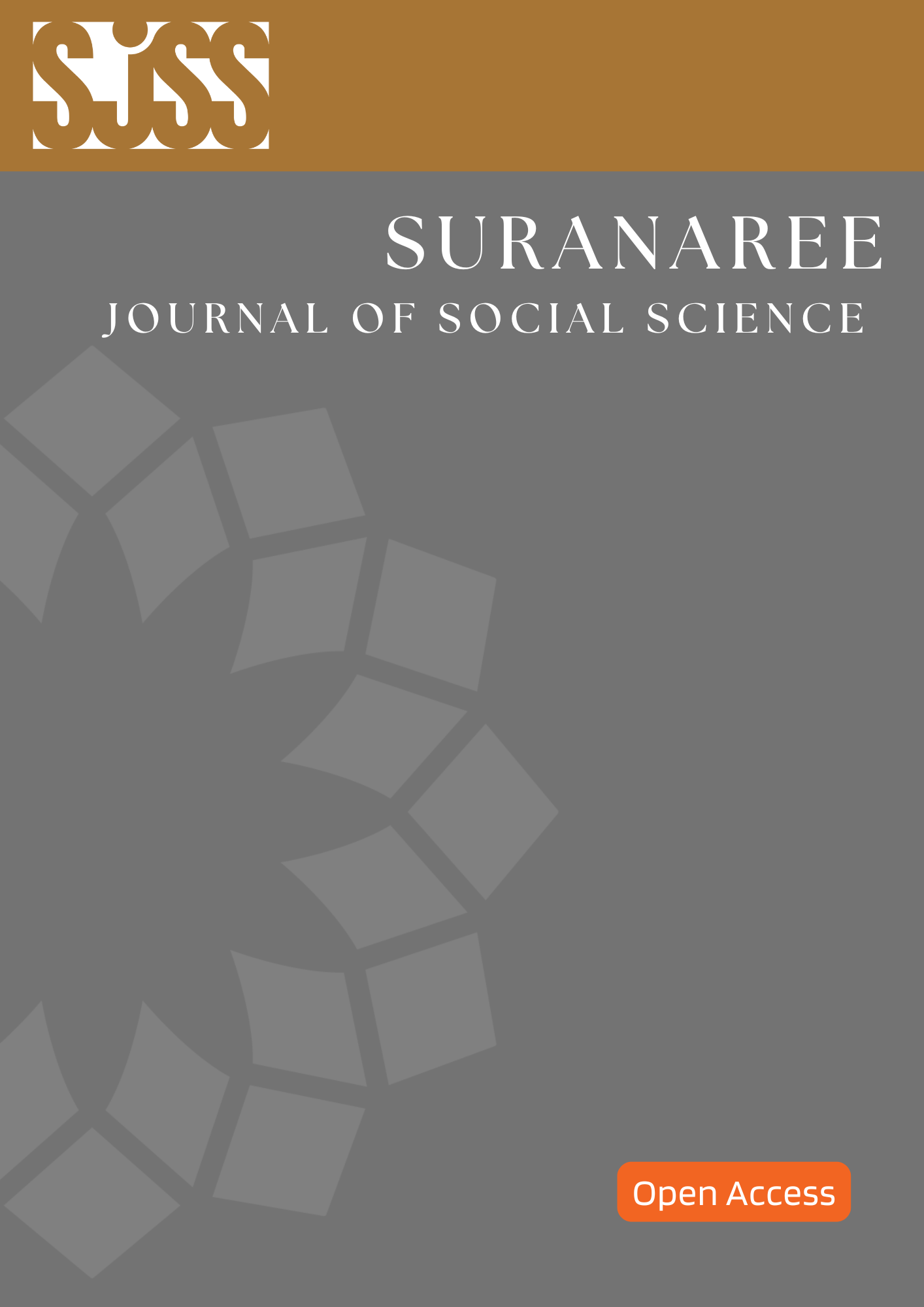Survey of Reforestation Area in Mok Cham Royal Project Using a Handheld GPS
Main Article Content
Abstract
The research objectives for this study are to 1) collect the coordinates of a reforestation boundary using a handheld GPS 2) create a reforestation database using Geographic Information System (GIS) and 3) conduct an analysis of plant survival and its relationship with the distance to a farmer’s home, the topographic height and the slope. This study included a survey of 52 farmers who are members of the reforestation project for the Mok Cham Royal Project, Amphoe Mae Ai, Changwat Chiang Mai. Data was collected using a handheld GPS to explore the boundary of the reforestation plots of the 52 farmers and it was found that 61 plots had been planted which contained a total of 39,948 trees. There are two types of planting which included fenced planting (43 percent) and agroforestry (57 percent). The coordinates obtained from the handheld GPS contains an average error of 7.36 meters. The analysis by GIS also found that the distribution of the reforestation plantation was most concentrated near the community at an altitude of 401 to 500 meters above sea level with slopes at 35 to 50 percent. The Chan Thongthet (Fraxinus griffi thii C.B. Clarke) had the highest survival rate at 77.59 percent. Survival rates correlated with the distance from the farmer’s house, the altitude and the slope with simple correlation coefficients (r) values 0.27, 0.17 and 0.26. The coefficient of determination ( ) values were 0.07, 0.03 and 0.07. It can be concluded that the survival rate of the plants may not be highly correlated with the distance to the farmer’s house, the altitude and the slope.
Article Details

This work is licensed under a Creative Commons Attribution-NonCommercial-NoDerivatives 4.0 International License.
References
Bangtakean Subdistrict Administrative Organization. (2019). Maintaining the Principles Tree Planting Year 2019. (In Thai). Suphanburi: Bangtakean Subdistrict Administrative Organization.
Chuchip, K. (2015). Some Techniques for Using RS, GPS and GIS in Forest Resource Surveys. (In Thai). Journal of Forest Management. 9(17-18): 108-124.
El-Rabbany, Ahmed. (2002). Introduction to GPS: The Global Positioning System. USA: Artech House.
Galati, Stephen R. (2006). Geographic Information Systems Demystified. UK: Artech House.
Geo-Informatics and Space Technology Development Agency (Public Organization). (2018). Application of Geo-informatics for Reforest Monitoring. (In Thai) [Online]. Available: https://gfms.gistda.or.th/node/29/.
Iadkong, S., Amonwiriyachai, W., Tanongsak, W. & Kaewprasirt, C. (2017). Application of Participatory Geo-informatics for Sago Palm Database Preparation in Phatthalung Province. (In Thai). Parichart Journal. 17(3): 15-25.
Jirakajohnkool, S. (2006). Geographic Information Systems and ArcGIS Desktop 9.1 User Manual. (In Thai). Bangkok: S. R. Printing Mass Product.
Pattamasinghachai, V., Inthaya, T., Na Lampang, S. & Jandawong, P. (2010). Manual for Reforestation. (In Thai). Chiang Mai: Highland Research and Development Institute (Public Organization). Pattanakiat, K. and Kongsombut, P. (2018). The Establishment on Biodiversity Database System of Mountain Ecosystem in Northern Thailand, Chiang Mai and Mae Hong Son Province Case Studies. Thai Forest Ecological Research Journal. 4(2): 55-65.
Pirapapke, k. (2015). The Use of Geo-informatics Systems for Improved Land Management in Maepoon Subdistrict, Uttaradit. (In Thai). Industrial Technology Lampang Rajabhat University Journal. 8(1): 12-23.
Posawang, P., Phosaard, S. & Pattara-Atikom, W. (2017). Towards A Precise-Positioning World: Multi-GNSS’s Current and Future Landscape. Science and Technology Nakhon Sawan Rajabhat University Journal. 9(10): 1-16.
Pongsawat, P. (2011). Application of Geographic Information System for the Study of Agricultural Land Tenure. (In Thai). FEU Academic Review. 5(2): 87-99.
Pongsawat, P. & Wongsa, T. (2020). The Error of Handheld Satellite GPS Receiver for Coordinate Survey of Reforestation Area (In Thai). In Proceeding of The 10th BENJIMITRA Network National & International Conference (pp 60-74). Chiang Mai, Thailand: North-Chiang Mai University.
Satirapod, C. & Kriengkraiwasin, S. (2007). Precise Point Positioning Software for Single-frequency GPS Observation. (In Thai). Research and Development Journal. 18(2): 27-32.
Yaigate, K. & Sukwimolseree, T. (2009). An Application of GPS Navigation Receivers in Generation of Spatial Data for Human Settlement. (In Thai). [Online]. Available: https://www.tumcivil.com/engfancAtic/content/file/arcicle/845-file1.pdf.


